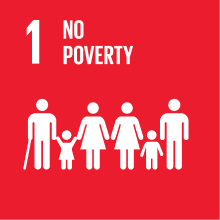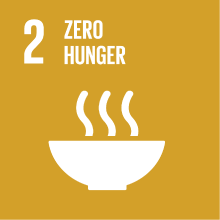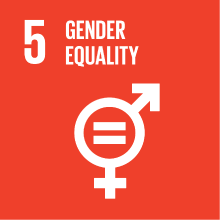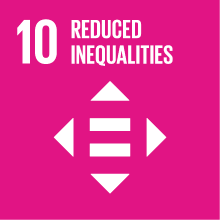ETHNOLINGUISTICS (ADVANCED COURSE)
- Academic year
- 2025/2026 Syllabus of previous years
- Official course title
- ETNOLINGUISTICA
- Course code
- FM0074 (AF:578807 AR:326310)
- Teaching language
- Italian
- Modality
- On campus classes
- ECTS credits
- 6
- Degree level
- Master's Degree Programme (DM270)
- Academic Discipline
- L-LIN/01
- Period
- 1st Semester
- Course year
- 2
- Where
- VENEZIA
- Moodle
- Go to Moodle page
Contribution of the course to the overall degree programme goals
Expected learning outcomes
Pre-requirements
Contents
Referral texts
G. R. Cardona, Introduzione all’etnolinguistica, Novara, 2006 (sections 3.1.1, 3.2.2, 3.2.3, 4.1, 4.2, 4.3, 4.4, 4.5, 4.6, 5.1, 5.2, 5.3, 7.4, 8.2, 8.3, 8.5).
M. Mancini, B. Turchetta (eds.), Etnografia della scrittura, Roma, 2014 (chapters 2, 6, and 7).
2. Further readings
2.1. Language and culture
F. Boas, Handbook of American Indian Languages, I, Washington, 1911, pp. 5-83.
E. Sapir, The Status of Linguistics as a Science, in «Language» 5, 1929, pp. 207-214.
B. Malinowski, Coral Gardens and their Magic, II, London, 1935, pp. 3-74.
B. L. Whorf, The relation of habitual thought and behavior to language, in Language, Culture, and Personality, Menasha, 1941, pp. 75-93.
C. Lévi-Strauss, L’analyse structurale en linguistique et anthropologie, in «Word» 1, 1945, pp. 1-21.
C. Lévi-Strauss, Linguistics and Anthropology, in Results of the Conference of Anthropologists and Linguists, Baltimore, 1953, pp. 1-10.
K. L. Pike, Language in Relation to a Unified Theory of the Structure of Human Behaviour, The Hague-London, 1967, pp. 1-7.
B. Berlin, P. Kay, Basic Color Terms, Berkeley-Los Angeles, 1969, pp. 1-45.
N. B. McNeill, Colour and colour terminology, in «Journal of Linguistics» 8, I, 1972, pp. 21-33.
D. Hymes, Foundations in Sociolinguistics. An Ethnographic Approach, Philadelphia, 1974, pp. 1-65.
T. Regier, P. Kay, Language, thought, and color: Whorf was half right, in «Trends in Cognitive Sciences» 10, 2009, pp. 439-446.
I. Krupnik, L. Müller-Wille, Franz Boas and Inuktitut Terminology for Ice and Snow: From the Emergence of the Field to the “Great Eskimo Vocabulary Hoax”, in I. Krpupnik, C. Aporta, S. Gearheard, G. J. Laidler, L. Kielsen Holm (eds.), SIKU: Knowing Our Ice, Dordrecht, 2010, pp. 377-400.
P. Wolff, K. J. Holmes, Linguistic Relativity, in «Cognitive Science» 2, 3, 2011, pp. 253-265.
2.2. Linguistic landscape
R. Landry, R. Y. Bourhis, Linguistic landscape and ethnolinguistic vitality: An empirical study, in «Journal of Language and Social Psychology» 16, 1997, pp. 23-49.
R. Scollon, S. W. Scollon, Discourses in place: Language in the material world, London, 2003, pp. 1-24 (Geosemiotics).
L. A. Kasanga, Odonymic Changes in Central Pretoria: Representation, Identity and Textual Construction of Place, in «International journal of the sociology of language» 234, 2015, pp. 27-45.
H. W. Amos, Regional Language Vitality in the Linguistic Landscape: Hidden Hierarchies on Street Signs in Toulouse, in «International journal of multilingualism» 14, 2, 2017, pp. 93-108.
I. Buchstaller, Community Cityscape: Modes of Engagement and Co-Construction of the Streetscape, in «Linguistics vanguard» 7, 5, 2021.
P. K. W. Tan, C. Purschke, Street Name Changes as Language and Identity Inscription in the Cityscape, «Linguistics vanguard» 7, 5, 2021.
M. Kabinde-Machate, M. Cekiso, P. Mandende, Analysing City of Tshwane Residents’ Perceptions of Street Renaming, in «Nomina Africana. Journal of the Names Society of Southern Africa» 36, 2, 2022, pp. 85-95.
M. Ptáčníková, Traversing Central Prague from Jan Palach Square to Ukrainian Heroes’ Street: The Symbolic Function of Place Names in a Linguistic Landscape, in «Folia onomastica Croatica» 31, 2002, pp. 145-156.
I. Buchstaller, S. Alvanides, F. Griese, Changes in the Commemorative Streetscape of Leipzig over the Past 100 Years, in «Journal of linguistic geography» 10, 2, 2022, pp. 112–129.
I. Buchstaller, C. Schneider, S. Alvanides, Towards a Taxonomy of Arguments for and against Street Renaming Exploring the Discursive Embedding of Street Name Changes in the Leipzig Cityscape, in «Linguistic landscape» 9, 1, 2023, pp. 5-35.
Assessment methods
- one from Introduzione all’Etnolinguistica (sections 3.1.1, 3.2.2, 3.2.3, 4.1, 4.2, 4.3, 4.4, 4.5, 4.6, 5.1, 5.2, 5.3, 7.4, 8.2, 8.3, 8.5);
- one from Etnografia della scrittura (chapters 2, 6, and 7);
- one from the further readings concerning Language and culture (2.1);
- one from the further readings concerning Linguistic landscapes (2.2).
It should be noted that the further readings will be framed and discussed during the lessons. The lecture slides, which will be regularly uploaded to the course's Moodle space, will serve as a guide to the key aspects of each text that require particular focus.
In particular, mastery of the topics, ability in presentation, terminological adequacy, and the ability for independent reflection on linguistically significant phenomena from an anthropological perspective will be taken into account for evaluation.
Type of exam
Grading scale
28–29: Displays a very good understanding of the topics covered in lectures and reference texts; makes largely appropriate use of the discipline’s technical terminology; demonstrates a strong ability for independent reflection on linguistically significant phenomena from an anthropological perspective.
26–27: Shows a good knowledge of the topics covered in lectures and reference texts; occasional inaccuracies in the use of the discipline’s technical terminology; moderate ability for independent reflection on linguistically significant phenomena from an anthropological perspective.
22–25: Demonstrates a partial and/or somewhat superficial understanding of the topics covered in lectures and reference texts; presentation is not always clear and may show deficiencies in the use of the discipline’s technical terminology; exhibits a sufficient ability for independent reflection on linguistically significant phenomena from an anthropological perspective.
18–21: Shows an incomplete but sufficient understanding of the topics covered in lectures and reference texts; presentation is unclear and/or lacks appropriate use of the discipline’s technical terminology; exhibits a limited but still adequate ability for independent reflection on linguistically significant phenomena from an anthropological perspective.
Teaching methods
Further information
Boas 1911 https://archive.org/details/handbookamerica00fracgoog/
Sapir 1929 https://www.jstor.org/stable/409588
Malinowski 1935 https://archive.org/details/coralgardensandt031834mbp
Whorf 1941 https://www.jstor.org/stable/42581315
Lévi-Strauss 1945 https://doi.org/10.1080/00437956.1945.11659244
McNeill 1972 https://www.jstor.org/stable/4175133
Regier – Kay 2009 https://www.sciencedirect.com/science/article/pii/S1364661309001454?via%3Dihub
Krupnik – Müller-Wille 2010 https://www.researchgate.net/publication/226206215_Franz_Boas_and_Inuktitut_Terminology_for_Ice_and_Snow_From_the_Emergence_of_the_Field_to_the_Great_Eskimo_Vocabulary_Hoax
Wolff – Holmes 2011 https://wires.onlinelibrary.wiley.com/doi/10.1002/wcs.104
Amos 2017: https://www.tandfonline.com/doi/full/10.1080/14790718.2015.1103244#references-Section (accesso via Sistema Bibliotecario di Ateneo)
Buchstaller 2021: https://duepublico2.uni-due.de/servlets/MCRFileNodeServlet/duepublico_derivate_00075023/Buchstaller_2021_Community_cityscape.pdf
Tan – Purschke 2021: https://www.researchgate.net/publication/354135084_Street_name_changes_as_language_and_identity_inscription_in_the_cityscape ùùù
Kabinde-Machate – Cekiso – Mandende 2022: https://journals.co.za/doi/10.2989/NA.2022.36.2.2.1368
Ptáčníková 2002: https://hrcak.srce.hr/file/415499
Buchstaller – Alvanides – Griese 2022: https://www.cambridge.org/core/journals/journal-of-linguistic-geography/article/changes-in-the-commemorative-streetscape-of-leipzig-over-the-past-100-years/578953D171A8AF76E4AE02EA330F2E6F
2030 Agenda for Sustainable Development Goals
This subject deals with topics related to the macro-area "Poverty and inequalities" and contributes to the achievement of one or more goals of U. N. Agenda for Sustainable Development




